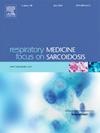骨骼肌减少症作为慢性阻塞性肺病的可治疗特征:从机制到管理。
IF 3.1
3区 医学
Q2 CARDIAC & CARDIOVASCULAR SYSTEMS
引用次数: 0
摘要
骨骼肌减少症在慢性阻塞性肺病中很常见,根据环境、年龄、疾病严重程度和营养状况的不同,患病率从14%到67%不等,这突出了其临床相关性以及标准化诊断标准和常规筛查的必要性,特别是在老年或更严重的病例中。它是全身性炎症、氧化应激、线粒体功能障碍、缺乏运动、缺氧、营养不良、激素失衡和结构性肌肉重塑等复杂相互作用的结果,所有这些都导致肌肉分解代谢和再生受损。这些因素形成了恶性循环,加剧了功能衰退,强调需要多方面的综合治疗方法。慢性阻塞性肺病患者的肌肉减少症是一种可测量、可改变和可治疗的特征,与肺功能、身体表现和预后恶化有关。使用EWGSOP2算法进行早期检测,从SARC-F筛查、肌力测试开始,通过成像和有针对性的干预进行确认,可以实现及时、有效的干预,以改善结果。COPD患者肌肉减少症的靶向治疗包括肺康复、营养支持和行为策略。运动和高蛋白、富含维生素d的饮食可以改善肌肉力量和功能。药物选择仍处于实验阶段。涉及肺科医生、物理治疗师、营养师和初级保健提供者的多学科护理可确保早期发现、个性化治疗,并通过解决呼吸损伤和肌肉损失的综合干预措施获得更好的结果。尽管取得了可喜的进展,但骨骼肌减少症作为COPD可治疗特征的研究仍存在主要空白,包括需要标准化的诊断标准、纵向研究、最佳干预策略和功能结果的整合。未来的研究应优先考虑公平性、机制洞察和实施科学来完善COPD的个性化护理和改善临床结果。本文章由计算机程序翻译,如有差异,请以英文原文为准。
Sarcopenia as a treatable trait in COPD: From mechanisms to management
Sarcopenia is common in COPD, with prevalence ranging from 14 % to 67 % depending on setting, age, disease severity, and nutritional status, highlighting its clinical relevance and the need for standardized diagnostic criteria and routine screening, especially in older or more severe cases. It results from a complex interplay of systemic inflammation, oxidative stress, mitochondrial dysfunction, physical inactivity, hypoxia, malnutrition, hormonal imbalances, and structural muscle remodeling, all contributing to muscle catabolism and impaired regeneration. These factors form a vicious cycle that worsens functional decline, highlighting the need for multifaceted, integrated therapeutic approaches. Sarcopenia in COPD is a measurable, modifiable, and treatable trait linked to worse lung function, physical performance, and outcomes. Early detection using the EWGSOP2 algorithm, starting with SARC-F screening, muscle strength testing, and confirmation via imaging and targeted interventions, can enable timely, effective interventions to improve outcomes. Targeted sarcopenia treatment in COPD includes pulmonary rehabilitation, nutritional support, and behavioral strategies. Exercise and high-protein, vitamin D–rich diets improve muscle strength and function. Pharmacological options remain experimental. Multidisciplinary care involving pulmonologists, physiotherapists, dietitians, and primary care providers ensures early detection, individualized treatment, and better outcomes through integrated interventions that address both respiratory impairment and muscle loss. Despite promising advances, key research gaps remain in sarcopenia as a treatable trait in COPD, including the need for standardized diagnostic criteria, longitudinal studies, optimal intervention strategies, and integration of functional outcomes. Future research should prioritize equity, mechanistic insights, and implementation science to refine personalized care and improve clinical outcomes in COPD.
求助全文
通过发布文献求助,成功后即可免费获取论文全文。
去求助
来源期刊

Respiratory medicine
医学-呼吸系统
CiteScore
7.50
自引率
0.00%
发文量
199
审稿时长
38 days
期刊介绍:
Respiratory Medicine is an internationally-renowned journal devoted to the rapid publication of clinically-relevant respiratory medicine research. It combines cutting-edge original research with state-of-the-art reviews dealing with all aspects of respiratory diseases and therapeutic interventions. Topics include adult and paediatric medicine, epidemiology, immunology and cell biology, physiology, occupational disorders, and the role of allergens and pollutants.
Respiratory Medicine is increasingly the journal of choice for publication of phased trial work, commenting on effectiveness, dosage and methods of action.
 求助内容:
求助内容: 应助结果提醒方式:
应助结果提醒方式:


